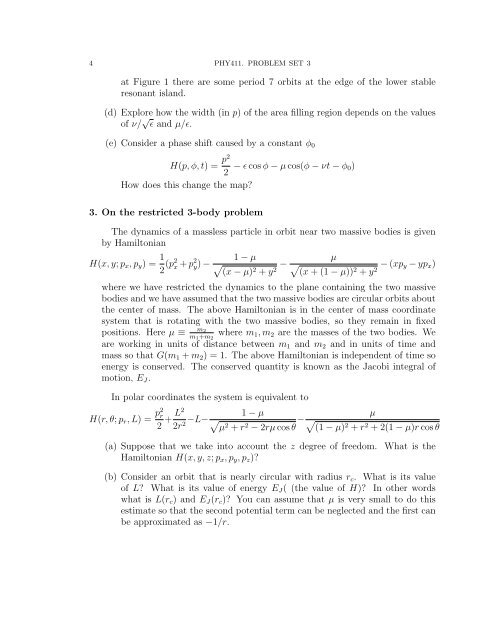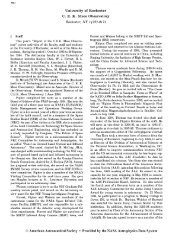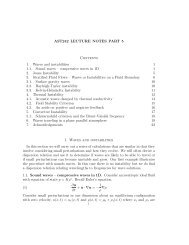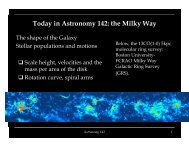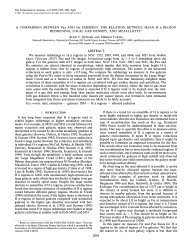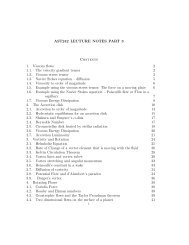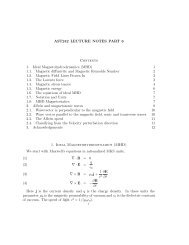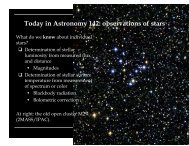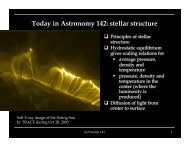PHY411. PROBLEM SET 3 1. Conserved Quantities - Astro Pas ...
PHY411. PROBLEM SET 3 1. Conserved Quantities - Astro Pas ...
PHY411. PROBLEM SET 3 1. Conserved Quantities - Astro Pas ...
- No tags were found...
You also want an ePaper? Increase the reach of your titles
YUMPU automatically turns print PDFs into web optimized ePapers that Google loves.
4 <strong>PHY41<strong>1.</strong></strong> <strong>PROBLEM</strong> <strong>SET</strong> 3at Figure 1 there are some period 7 orbits at the edge of the lower stableresonant island.(d) Explore how the width (in p) of the area filling region depends on the valuesof ν/ √ ɛ and µ/ɛ.(e) Consider a phase shift caused by a constant φ 0H(p, φ, t) = p22 − ɛ cos φ − µ cos(φ − νt − φ 0)How does this change the map?3. On the restricted 3-body problemThe dynamics of a massless particle in orbit near two massive bodies is givenby HamiltonianH(x, y; p x , p y ) = 1 2 (p2 x + p 2 y) −1 − µ√(x − µ)2 + y 2 − µ√(x + (1 − µ))2 + y 2 − (xp y − yp x )where we have restricted the dynamics to the plane containing the two massivebodies and we have assumed that the two massive bodies are circular orbits aboutthe center of mass. The above Hamiltonian is in the center of mass coordinatesystem that is rotating with the two massive bodies, so they remain in fixedpositions. Here µ ≡ m 2m 1 +m 2where m 1 , m 2 are the masses of the two bodies. Weare working in units of distance between m 1 and m 2 and in units of time andmass so that G(m 1 + m 2 ) = <strong>1.</strong> The above Hamiltonian is independent of time soenergy is conserved. The conserved quantity is known as the Jacobi integral ofmotion, E J .In polar coordinates the system is equivalent toH(r, θ; p r , L) = p2 r2 + L22r 2 −L− 1 − µ√µ2 + r 2 − 2rµ cos θ − µ√(1 − µ)2 + r 2 + 2(1 − µ)r cos θ(a) Suppose that we take into account the z degree of freedom. What is theHamiltonian H(x, y, z; p x , p y , p z )?(b) Consider an orbit that is nearly circular with radius r c . What is its valueof L? What is its value of energy E J ( (the value of H)? In other wordswhat is L(r c ) and E J (r c )? You can assume that µ is very small to do thisestimate so that the second potential term can be neglected and the first canbe approximated as −1/r.


